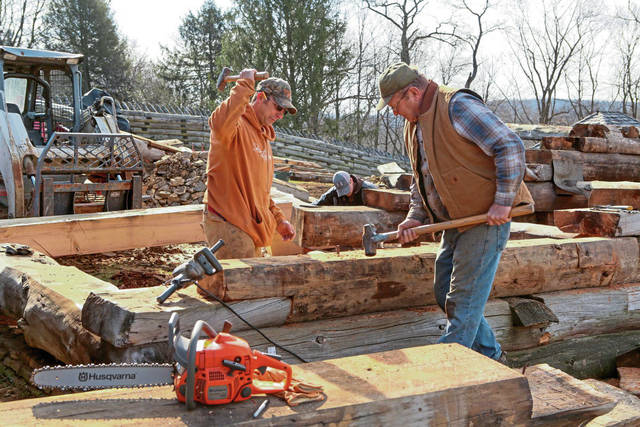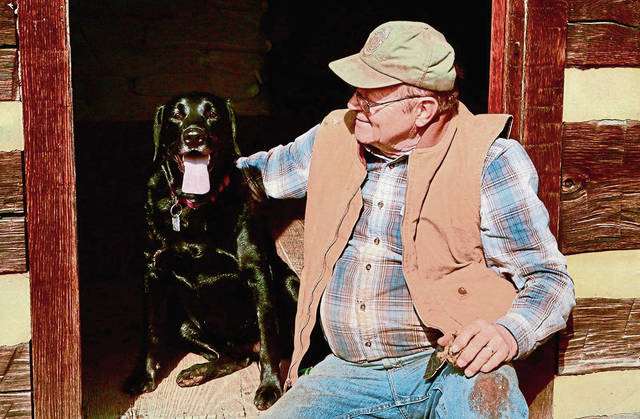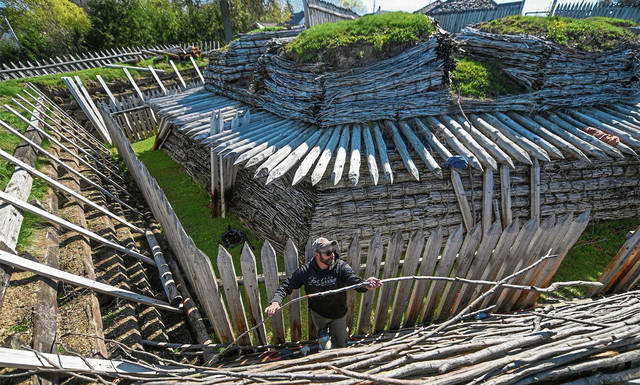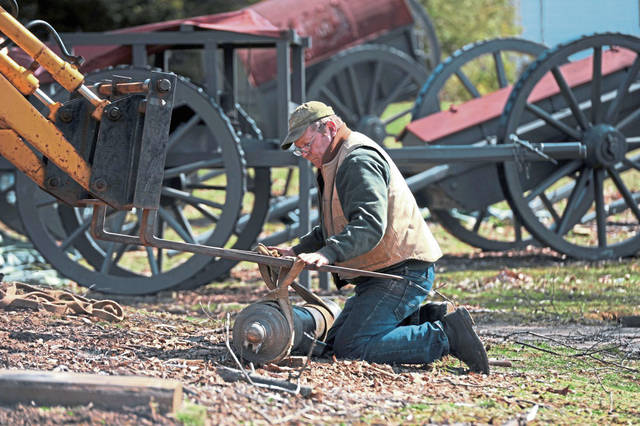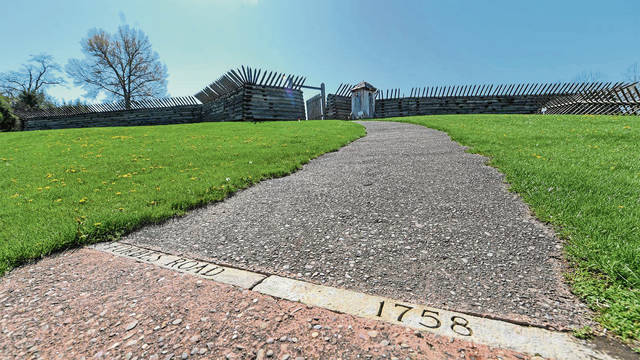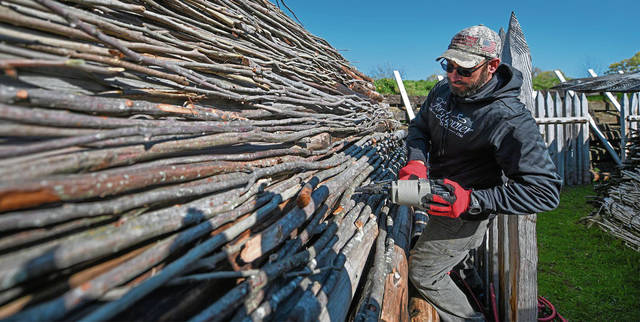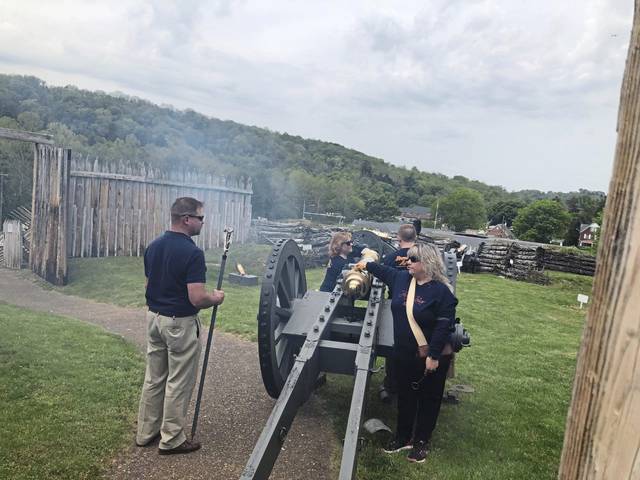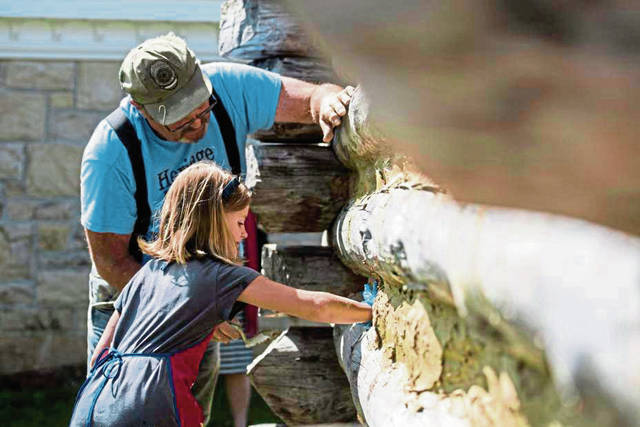Renowned preservationist remembered at Fort Ligonier ceremony
A historic restorationist who labored for decades creating historic reproductions at Fort Ligonier was remembered Saturday as a man who contributed to the good of his community.
Charles A. Fagan III, a Fort Ligonier trustee emeritus, described his friend, the late Bradford E. “Brad” Mooney, 76, of Worthington, as a man for whom “there was never enough time, and he used every single moment of it.”
Ralph Bennett, a Fort Ligonier trustee, gave Fagan’s speech about Mooney, who died March 4 after a brief battle with cancer, to about 100 members of his family and friends gathered for the 75-minute memorial service in the upper reaches of the fort.
“Over many years, he made the time to make daily contributions to his family, his community and his beloved Fort Ligonier, ” Fagan wrote.
Mooney had led the restoration of an artillery train, cannon batteries and numerous buildings at the fort.
It was fitting that the 75-minute memorial service for the Armstrong County man was held at the fort above Loyalhanna Creek because he “worked here four days a week, for 30 years,” said Julie Donovan, a Fort Ligonier spokeswoman.
“He dedicated (about) one-third of his life to Fort Ligonier,” Donovan added.
Mooney worked on the most extensive phase of the fort’s reconstruction. His work began with reconstructing the outer retrenchment, hospital, officers’ quarters, and the Fascine cannon battery. To make his work as historically accurate as possible, Mooney relied on historical records.
The artillery train he created with his son, Drew Mooney of Butler, and blacksmith Jymm Hoffman, is a re-creation of that used by Gen. Forbes’ British army. It was used in the 1758 campaign that succeeded in taking Fort Duquesne, the bastion the French built where the Allegheny and Monongahela rivers meet to form the Ohio River. It’s where Point State Park in Pittsburgh is today.
“A great deal of what is seen and admired (here) is Brad’s work,” Bennett said on Fagan’s behalf.
“Fort Ligonier was the pinnacle of his career,” Bennett said. “He understood the greatness and importance of this place.”
Mooney was a “mobile library” of American history of 18th log houses and stone structures, Fagan wrote.
But Mooney did more than work at Fort Ligonier.
Through his company, Heritage Restorations, he restored more than 150 structures, including a log house on Fagan’s property and the humble log school house dwarfed by the majestic Cathedral of Learning at the University of Pittsburgh’s campus in Oakland.
Although he worked at Fort Ligonier, he did not work for Fort Ligonier, Donovan said. He was a contractor through his company, Heritage Restorations of Worthington, said his son, Drew, who worked on the restoration projects with his father.
“Work was his love,” , noting that he and his father “were a lifelong team.”
Mooney was a self-taught preservationist, said his widow, Deborah Mooney. He learned how to do it as a way of preserving his job during a recession in the 1970s.
Having earned degrees in landscape architecture and forestry, he was working for a landscaping firm on Pittsburgh’s Mount Washington when the owner was considering furloughs. When the owner gave employees the opportunity to restore an old building on his property, Mooney used the experience to learn restoration and launch a new career that became his passion, Deborah said.
His reputation was such that he was on the structural preservation committee of Mount Vernon, the Virginia home of George Washington, Bennett said.
Restoring and preserving the past was very important to his father, said Mooney, who specializes in artillery restoration at his business in Butler.
His daughter, Aubin Mooney Turo of Dunkirk, said her father was “all about repurposing, reusing and recycling what others discard.”
Drew Mooney echoed his sisters observation.
“He liked to return things to their former greatness,” Drew Mooney said It was in his lifeblood.”
Joe Napsha is a TribLive reporter covering Irwin, North Huntingdon and the Norwin School District. He also writes about business issues. He grew up on Neville Island and has worked at the Trib since the early 1980s. He can be reached at jnapsha@triblive.com.
Remove the ads from your TribLIVE reading experience but still support the journalists who create the content with TribLIVE Ad-Free.

